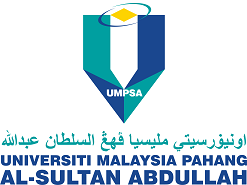Analysis of Stock Market Reaction in Malaysia During Covid-19 Pandemic via ARIMA
DOI:
https://doi.org/10.15282/mekatronika.v5i1.9027Keywords:
Stock Market, ARIMA, Forecast, Aviation Industry, Tourism IndustryAbstract
Investment has become a major money-making business in this world through investment in financial markets, stock markets, and forex. There is uncertainty about which stocks to buy during a pandemic like Covid-19. Poor investment choices will affect the profitability of the investors, shifting their risk appetite to be more defensive. Thus, this research is carried out to study the movement of stocks for the year 2020 in Malaysia based on the data obtained from Yahoo Finance. The objective is to provide investors with a guide to investing efficiently during a pandemic. This study investigates how Covid-19 impacts the rate of growth or reduction of stocks so that the performance of the stocks can be forecasted in the future. The moving average method is used to analyze the trend of the stock by comparing the top gainers against the top losers during the periods of pre Covid-19 and Covid-19. The Autoregressive Integrated Moving Average (ARIMA) model studies the autocorrelation function (ACF) graph of selected stocks to further understand the movement of the stocks and compare it to the closing prices of the selected stocks. Based on the findings, it was demonstrated that the quantitative method used could be used to study the effects of a pandemic, as well as the severity of the losses incurred, and profits earned by the industries. The industries that are essential to the country, like pharmaceuticals and rubber manufacturing, are able to maintain their businesses. Moreover, these sectors have profited from the pandemic. The tourism and aviation industries have been hit the hardest by the pandemic, as evidenced by falling stock prices. Thus, it would be wise for investors to invest in an essential sector company during the Covid-19 pandemic.
Downloads
Published
Issue
Section
License
Copyright (c) 2023 University Malaysia Pahang Publishing

This work is licensed under a Creative Commons Attribution-NonCommercial 4.0 International License.




